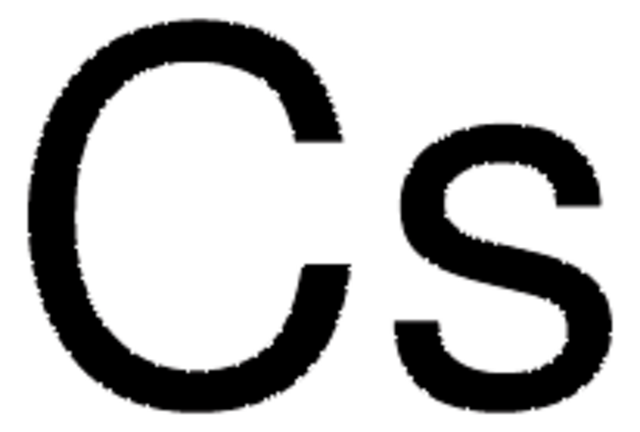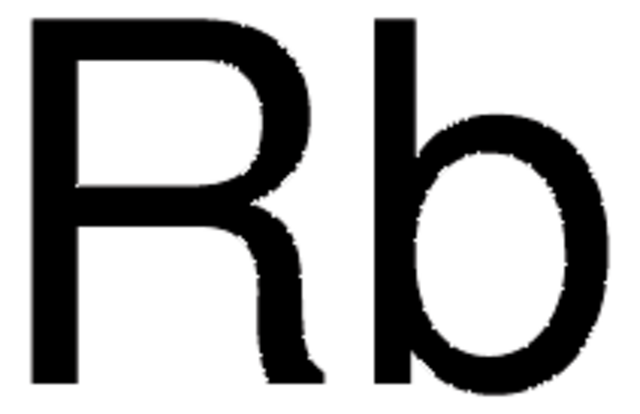441899
Estroncio
dendritic pieces, purified by distillation, 99.99% trace metals basis
Sinónimos:
Elemento estroncio
About This Item
Productos recomendados
Quality Level
assay
99.99% trace metals basis
form
dendritic pieces
purified by
distillation
reaction suitability
reagent type: reductant
resistivity
23 μΩ-cm, 20°C
bp
1384 °C (lit.)
mp
757 °C (lit.)
density
2.6 g/mL at 25 °C (lit.)
SMILES string
[Sr]
InChI
1S/Sr
InChI key
CIOAGBVUUVVLOB-UHFFFAOYSA-N
¿Está buscando productos similares? Visita Guía de comparación de productos
General description
Application
signalword
Danger
hcodes
Hazard Classifications
Skin Irrit. 2 - Water-react 1
supp_hazards
Storage Class
4.3 - Hazardous materials which set free flammable gases upon contact with water
wgk_germany
WGK 3
flash_point_f
Not applicable
flash_point_c
Not applicable
ppe
Eyeshields, Gloves, type P3 (EN 143) respirator cartridges
Elija entre una de las versiones más recientes:
¿Ya tiene este producto?
Encuentre la documentación para los productos que ha comprado recientemente en la Biblioteca de documentos.
Los clientes también vieron
Nuestro equipo de científicos tiene experiencia en todas las áreas de investigación: Ciencias de la vida, Ciencia de los materiales, Síntesis química, Cromatografía, Analítica y muchas otras.
Póngase en contacto con el Servicio técnico







